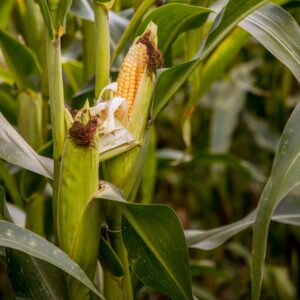
The leather industry has been around for thousands of years – ever since humankind began hunting animals.
Hides and skins are a by-product of the meat industry, so supply does not react to demand for leather, but for meat. Leather is used in the automotive, footwear, furniture, clothing, leather goods and exotic leathers (e.g. ostrich) sectors.
Leather makes a contribution to the quality of everyday life: virtually everyone wears or uses one or more leather products on a regular basis.
The leading exporters of leather are Italy, US, Brazil, China and Germany (Statista, 2023). The exporters of leather goods are China, Italy and France (Statista, 2023).
Further reference:
South Africa Exports of raw hides and skins (other than furskins) and leather was US$192.91 Million during 2022, according to the United Nations COMTRADE database on international trade (Trading Economics, 2023).
The A Profile of the South African hides, skins and leather market value chain, which used to be an annual feature on the Department of Agriculture website, looked at exports and imports, and the tariffs and standards to be satisfied to access various markets like the EU, China and the USA.
Find statistics on hides and skins at www.agrilevy.co.za.
The value chain is divided into five stages:
For a more detailed consideration, consult the publication A Profile of the South African hides, skins and leather market value chain (see “Websites and publications” heading).
Skins and hides are a rich source of raw material in South Africa’s leather value chain. Most abattoirs have partnerships with skins and hide traders who export raw skins and hides as well as low value-added semi-finished leather products.
At the same time, hides from communal cattle farmers are thought to be going to waste or attracting only very low price in informal markets. These hides are a communal resource whose value would be greatly enhanced if they could be processed into tanned leather and supplied for further value addition in the labour-intensive footwear, furniture and automotive leather value chains.
The skins & hides available in the informal sector could also create business opportunities for communal entrepreneurs to act as emerging hide merchants; and the sector could be substantially upgraded by training informal slaughter operators, emerging farmers and herders to prepare hides, collect and sell them to local tanneries. A main impact will be better slaughtering practices by communal farmers, generating better quality hides which fetch higher market prices.
Source: the Department of Trade, Industry and Competition
The following are the main categories of skins or hides according to species:
Sources: A Profile of the South African hides, skins and leather market value chain, available at www.dalrrd.gov.za; The introduction to leather at www.leathercouncil.org.
Under “Financial Assistance” on the Department of Trade, Industry and Competition (the dtic) website, www.thedtic.gov.za, find the “Clothing, Textiles, Footwear and Leather Growth Programme (CTFLGP)” option.
Government’s Industrial Policy Action Plans (IPAPs) included the Clothing, Textiles, Leather and Footwear sector. The Competitiveness Improvement Grant (CIP) previously supported a number of national and sub-national clusters which promoted world class manufacturing processes and principles. Two programmes were:
The IPAP intervention in the leather and footwear sub-sector registered positive results: Between 2010 and 2016, exports of leather and footwear grew by 167%, from R 1.98 billion to R5.29 billion, with a peak employment figure of 21,190 in the sector, clawing back jobs to a level last seen in 2007 (the dti, 2018).
Based on National Treasury’s “Draft Guidelines on Export Taxes”, the then dti was pursuing a ban on “on the exports of ‘raw hides’ and export duties on the semi-finished ‘wet blue’ (full substance, grain split and drop slit) aimed at effective diversion of the leather raw and semi-finished resources for downstream value addition (African Leather, Vol12, No 5, May; IPAP 2017/18-2019/20).
The revised Automotive Production and Development Programme (APDP) and Automotive Investment Scheme (AIS) are incentives to the automotive sector. This supports the demand for leather.
The Cape Clothing and Textile Cluster (CCTC) is a not-for-profit initiative jointly established by government and industry to boost the competitiveness of the clothing, textile, footwear and leather (CTFL) manufacturing industry in the Western Cape. See https://capeclothingcluster.org.za.
A previous intervention was the Communal Hides Commercialisation Pilot Project (IPAP 2015/16 – 2017/18).
Further reference:
Visit the websites listed earlier on this page. The ISTT website www.tanschool.co.za, for example, is a must-read for anybody in the leather industry. Its menu options include a list of the chemicals used to make leather, provides a dictionary of terminology, lists leather magazines and provides a list of related websites. Links to international bodies, websites as well as details of UK and USA Tanning publications may be found.